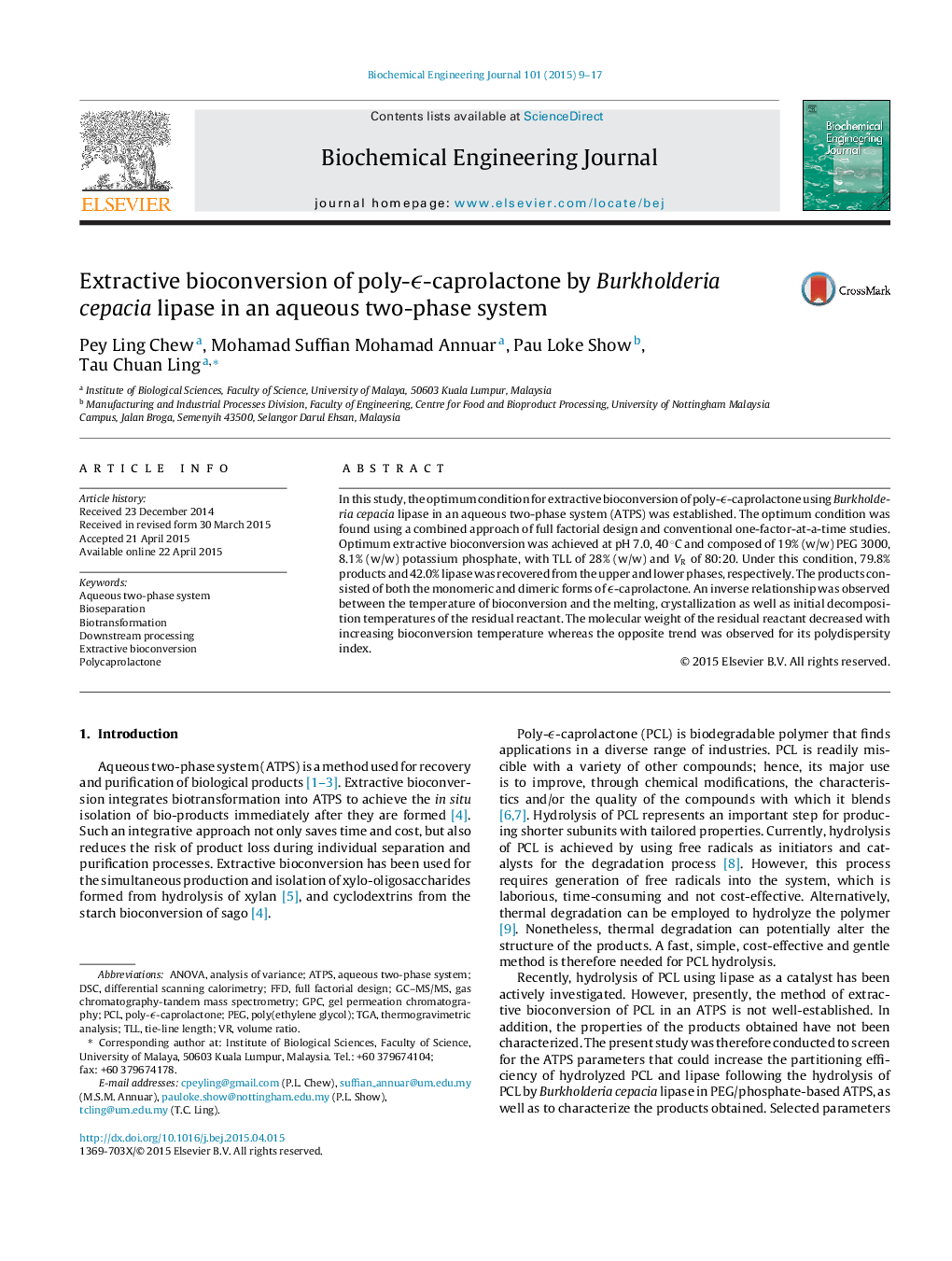| Article ID | Journal | Published Year | Pages | File Type |
|---|---|---|---|---|
| 2837 | Biochemical Engineering Journal | 2015 | 9 Pages |
•Optimum condition for extractive bioconversion of PCL in an ATPS was established.•79.8% products and 42.0% lipase were recoverable from separate phases.•The products were characterized qualitatively using GC/MS–MS, TGA, DSC and GPC.•The products consisted of monomeric and dimeric forms of ϵ-caprolactone.
In this study, the optimum condition for extractive bioconversion of poly-ϵ-caprolactone using Burkholderia cepacia lipase in an aqueous two-phase system (ATPS) was established. The optimum condition was found using a combined approach of full factorial design and conventional one-factor-at-a-time studies. Optimum extractive bioconversion was achieved at pH 7.0, 40 °C and composed of 19% (w/w) PEG 3000, 8.1% (w/w) potassium phosphate, with TLL of 28% (w/w) and VR of 80:20. Under this condition, 79.8% products and 42.0% lipase was recovered from the upper and lower phases, respectively. The products consisted of both the monomeric and dimeric forms of ϵ-caprolactone. An inverse relationship was observed between the temperature of bioconversion and the melting, crystallization as well as initial decomposition temperatures of the residual reactant. The molecular weight of the residual reactant decreased with increasing bioconversion temperature whereas the opposite trend was observed for its polydispersity index.
